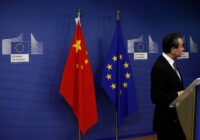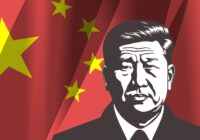There is no evidence that the reopening of talks between North and South Korea was a direct result of American coercion toward Pyongyang.
Despite his jabbing of metropolitan elitists, US President Donald Trump has cultivated praise from some over his handling of North Korea. Ban Ki-moon, the former UN secretary-general, applauded the president’s strong words, deeming them in line with, not against, the international community’s stance toward the Hermit Kingdom. Meanwhile, Hong Seok-hyun, South Korea’s former ambassador to the US, told The Washington Post that the Trump doctrine of peace through strength “just might work.”
Some experts are now pointing out the tangible results from the administration’s more forceful approach compared with past presidents. Speaking with Fair Observer, Greg Scarlatoiu, executive director of the Committee for Human Rights in North Korea, said: “President Trump’s strategy is working. The USA can no longer be taken for granted as utterly predictable.”
After the Kim Jong-un regime reopened a hotline to Seoul on January 3, North Korea has agreed to hold military talks and will send its athletes to the Winter Olympics taking place in Pyeongchang, South Korea, in February.
The agreement represents a symbolic breakthrough after months of growing tensions over North Korea’s rapidly advancing nuclear program and diminishes the threat of a Kim-shaped headache during the games. What’s more, Trump deserves kudos for nudging China, the North’s sole ally, into taking a tougher stance in the form of sanctions, thus hitting the country where it hurts. However, there is no evidence to suggest that the reopening of talks was a direct result of revived American coercion toward North Korea.
The North may actually be taking a peace offensive in order to buy time. It knows the South Korean government wants the Winter Olympics to go off without a hitch and undoubtedly will expect returns for its goodwill gesture. The regime is likely to present a tall order of demands for the South, according to Scarlatoiu, including the suspension of combined exercises with the United States, the end of sanctions and a demand for more aid. Failing that, the South can expect a closing Olympic ceremony fireworks show of missile launches and more nuclear tests.
Neither is there evidence to suggest that the Trump administration is any closer to its goal of stopping North Korea’s nuclear program. Despite Trump’s threats of “fire and fury,” the North has soldiered on. In September 2017, the North conducted a nuclear test in the face of repeated warnings from President Trump, who told the global media that the US “will handle” the situation. Following this, Kim tested a ballistic missile capable of striking the US mainland just a few months later.
While making the US more unpredictable has kept the North Korean regime on its toes, brinkmanship has not diminished the two inconvenient truths of the nuclear crisis. Firstly, the regime will never give up its quest for nuclear weapons because it sees those weapons as the only means of survival and increasingly as a raison d’être. Secondly, there is no real military solution without the loss of millions of lives on the Korean Peninsula. Even a limited attack on the North’s nuclear facilities could be misinterpreted as an all-out attack on the country.
Defense analysts have emphasized the threat of retaliation using North Korea’s conventional weapons that can direct sustained artillery fire and rocket barrages up to 300,000 rounds an hour to South Korea’s capital. Trump knows this, and it shows what his threats truly are: Twitter bluffs.
These two facts make it impossible to achieve a Korean Peninsula free of both nuclear weapons and nuclear devastation. The Trump administration, therefore, is right to encourage the two Koreas to hold talks, which is better placed to building peace in the region — a more achievable goal. The trouble with empty threats, in contrast, is that they may be taken seriously and cause severe miscalculation. While Donald Trump’s brinkmanship rhetoric has certainly made gains, one wonders if an approach without the dangerous bluster might have produced the same results.
The views expressed in this article are the author’s own and do not necessarily reflect Fair Observer’s editorial policy.
Photo Credit: Efired / Shutterstock.com
Support Fair Observer
We rely on your support for our independence, diversity and quality.
For more than 10 years, Fair Observer has been free, fair and independent. No billionaire owns us, no advertisers control us. We are a reader-supported nonprofit. Unlike many other publications, we keep our content free for readers regardless of where they live or whether they can afford to pay. We have no paywalls and no ads.
In the post-truth era of fake news, echo chambers and filter bubbles, we publish a plurality of perspectives from around the world. Anyone can publish with us, but everyone goes through a rigorous editorial process. So, you get fact-checked, well-reasoned content instead of noise.
We publish 2,500+ voices from 90+ countries. We also conduct education and training programs
on subjects ranging from digital media and journalism to writing and critical thinking. This
doesn’t come cheap. Servers, editors, trainers and web developers cost
money.
Please consider supporting us on a regular basis as a recurring donor or a
sustaining member.
Will you support FO’s journalism?
We rely on your support for our independence, diversity and quality.







